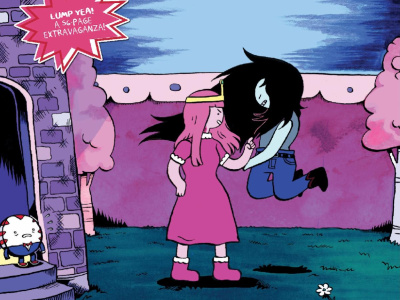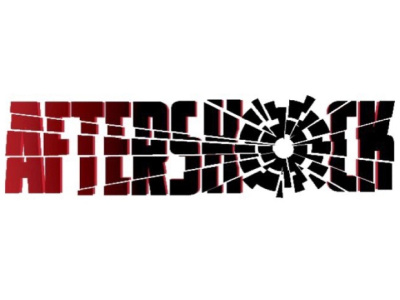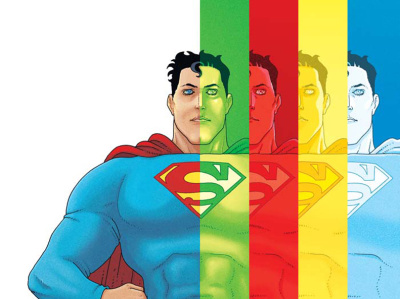
Since there’s not much stirring in the theatrical category, it’s a good thing that the “TV on DVD” category delivers two blockbusters, the final season of the cult hit Lost and the 13th season of The Simpsons. Also movie lovers who may never have warmed up to silent films, should definitely check out 3 Silent Classics By Josef Von Sternberg, the finest movie box set of the year so far with superbly re-mastered prints of 3 sophisticated late silent-era classics that are as exciting and revelatory as the best films from any era in the history of cinema.
TV on DVD
Tuesday is a red letter day in this category thanks to the release of the both the final season and a complete set of the ultimate cult series Lost. Lost may have struggled in the ratings at times over its six-year run, but it has always retained a devoted following, and from the very first season the producers of the show realized the importance of DVD sales and how to pack extra features into the sets. By season three fans were regularly purchasing more than a million DVD sets in part because of the extra features on the discs that help explain the series’ labyrinthine plot. Nowhere is that help needed more than in Lost: The Complete Sixth and Final Season (ABC/Disney, 714 min., $59.99, BD $79.99). While time traveling elements (with flash forwards and flashbacks) had predominated in seasons 4 and 5, in the final season the concept of parallel universes (very familiar to comic book fans) was added in the form of “flash sideways” to a universe in which Oceanic Flight 815 never crashed. This concept had the effect of putting more emphasis on the characters than on the plot. However fans feel about the ending of the show, the DVD and Blu-ray sets provide plenty of fodder for discussion in the audio commentaries and in a special feature “The End: Crafting a Final Season,” which includes producers of a number of landmark TV series talking about the best ways to wind it all up. In addition to the interview-laden “Lost on Location,” there is also the all-important “See You in Anotha Life, Brotha” feature that examines the “flash sideways” phenomenon, and more secrets are revealed in a “new chapter of the island’s story” that is included in both the DVD and BD sets.
Lost: The Complete Sixth and Final Season is definitely a “must-have” for fans, the only question is whether or not to spring for Lost: The Complete Collection (ABC/Disney, 5074 min., $229.99, BD $279.99), which contains every episode of the series along with over 30 hours of bonus features packaged in a Lost island replica along with a collectible “Senet Game” as seen in Season 6, an exclusive episode guide, a collectible Ankh, and a black light penlight.
The other major TV release this week is one of the few TV releases of the year that can compete with Lost in sales, The Simpsons: The Complete 13th Season (Fox, 484 min., $49.99, BD $59.99), which features Ralph Wiggum on the cover and contains all 22 episodes from 2001-2002, the last full season of the long-running series to use traditional cel animation. The set includes “Treehouse of Horror XII,” which contains the hilarious Harry Potter parody "Wiz Kids," and the classic “Tales From the Public Domain” with Bart as Hamlet.
The latest set from the popular military-themed crime drama NCIS, NCIS: The Complete 7th Season (Paramount, 1032 min., $55.98) is due on Tuesday, while other continuing series out this week include the contemporary primetime soapers 90210: The Complete 2nd Season (Paramount, $44.99), and Gossip Girl: The Complete Third Season (Warner Bros., $59.98). Fans of vintage TV may want to check out The Patty Duke Show: Season 3 (Shout Factory, 900 min., $39.97), which contains 32 episodes from 1965-1966 season.
Two excellent TV nature documentaries are also debuting this week including a Blu-ray edition of The Universe: Our Solar System (A&E Home Video, 240 min., $29.95), which was released on conventional DVD last year, and which includes all10 episodes of the first season of the science series that appeared on The History Channel. The sun and each of the planets get in-depth treatment in this series, which manages to be consistently interesting while avoiding much of the sensationalism that plagues so many of the "science" series on commercial cable channels. The other excellent documentary premiering this week is The Great Rift: Africa’s Greatest Story (BBC, 150 min. $19.95, BD $24.95) from the producers of Life, The Galapagos, &
Anime
There are two interesting Blu-ray releases this week including with Full Metal Alchemist: Brotherhood (Funimation, 13+, 325 min., $54.98, DVD $49.98), which includes the second 13 episodes of a new anime version of Hiromu Arakawa’s Full Metal Alchemist manga that follows the narrative of the manga much more closely than the original. The series looks spectacular on Blu-ray and the 2-disc BD comes with four full color postcards from the movie.
The other key Blu-ray release is the Death Note Double Feature (Viz Media, 16+, 260 min. $39.99), which includes the two live action Death Note movies, Death Note and Death Note 2: The Last Name. Though obviously not anime, these live-action films are based on the same manga series that inspired the popular anime that ran on Adult Swim.
Given the depressed state of the American anime industry, it might seem strange but this summer, a new company,
The one new series debuting this week is the space opera Tytania Collection 1 (Sentai Filmworks, “13+,” 325 min.$49.98), which includes the first 13 episodes of anime series directed by Noboru Ishiguro (Super Dimension Fortress Macross) and adapted from a series of light novels by Yoshiki Tanaka.
Re-priced sets due this week include Big Windup Oofuri Complete Series (Funimation, “13+,” 625 min. $29.98), a superb baseball anime, the otaku-themed Genshiken: Society for the Study of Modern Visual Culture DX Litebox (Media Blasters, “13+, 375 min., $34.99), and the Shattered Angels Complete Collection (Funimation, “14+,” 360 min., $19.98).
Classics
Silent movie fans have had a lot to cheer about recently with Kino’s release of two Buster Keaton films on Blu-ray and the upcoming release of a complete version of Fritz Lang’s Metropolis, but the Criterion Collection’s box set of 3 Silent Films By Josef von Sternberg (Criterion, Unrated, $79.95) stands as perhaps the best release of silent films ever. First of all there are the films themselves, the seminal gangster film Underworld, the ultimate inside Hollywood in the 1920’s/Russian Revolution epic The Last Command, and the fluidly directed Docks of New York, which many of Von Sternberg’s admirers consider his best film. Von Sternberg was one of the most individual and idiosyncratic talents every embraced by Hollywood and these films are representative of his best work from the lyrical, highly visual late silent era, the apex of poetic filmmaking-- all three are presented in brilliant high definition transfers.
In addition to the best versions of the film themselves that anyone has seen since they premiered in the late 1920s, the Criterion discs also include two scores for each film—sensitive and traditional orchestral scores by Robert Israel for all three movies plus more modern musical tracks for Underworld and The Last Command by the Alloy Orchestra and a piano-centric score by Donald Sosin and Joanna Seaton for Docks of New York that features an original song, “My Lucky Day,” that sounds like it could have been written in 1925.
Each film also includes a superb extra feature. Underworld comes with a perceptive visual essay on Von Sternberg’s silent movie career by UCLA film professor Janet Bergstrom, while The Last Command is accompanied by a half-hour documentary by film scholar Tag Gallagher, and The Docks of New York disc includes a rare 1968 Swedish TV interview with Von Sternberg. In addition the box set comes with a superb 96-page book filled with essays along with a chapter from Von Sternberg’s autobiography dealing with Emil Jannings, the star of The Last Command.
Also in the booklet is Ben Hecht’s original treatment for Underworld, which contrasts strongly with the final film, which Hecht wanted to disown until it became a surprise smash hit in 1927. Underworld was hardly the first gangster film, but it did inaugurate the vogue for gangster movies that lasted through the mid-1930s. Howard Hawks’ Scarface (1932) in particular owes a major debt to Underworld, and elements in Underworld such as a girl named “Feathers” and the “spittoon scene” are replicated in Hawks’
While Underworld would probably rank as the least of the three films in Von Sternberg’s eyes, its heady mixture of montage and movement, both by the camera and within the frame delivers a fast-moving narrative with characters of surprising complexity. With its genre defining elements, Underworld remains the most accessible of the three films in the set. Hecht was upset that his animalistic Zola-esque gangster Bull Weed was given a softer side, but the result is a much more interesting film than one might have expected from Hecht’s pedestrian story treatment. Von Sternberg compresses time in an elliptical jewelry store robbery and expands it by following an undulating feather as it slowly falls to the floor. Before there was any such thing as stereoscopic 3-D cinematography, he created depth in his shots by carefully arranging elements in different planes of almost every setup. The visual poetry of the well-composed shots with their looming foreground objects is echoed by the laconic brilliance of the title cards, which never hang on too long, and set the scene with great precision—“A great city in the dead of night…streets lonely, moon-flooded…buildings empty as the cliff dwellings of a forgotten age.”
In The Last Command Emil Jannings portrays a powerful and well-connected Russian General in the Czarist army who is reduced to the status of a movie extra in
For pure visual poetry it is hard to top Docks of New York with its hellish scenes of coal dust-covered stokers slaving in front of giant boilers, ogling graphitti covered walls, or clamoring over the side of the ship as they head for waterfront saloons. A shimmering reflection of a suicidal prostitute jumpstarts this elemental love story. Betty Compson never surpassed her performance as the world-weary Mae, while as the stoker Bill Roberts George Bancroft adopted a rolling sailor’s gait and managed to display a level of humanity that rises well above the “hairy ape” stereotype of his profession. Physically Compson and Bancroft display a combined lack of glamour that is rare in Hollywood film (there’s no “Pretty Woman” view of prostitution here), and they are ably supported by strong casting that includes the secondary roles (especially Olga Baclanova) and extends to every single extra in the picture.
Theatrical Films
Not much of interest in this category this week, though Jennifer Lopez fans will probably want to check out her comeback film, The Back-Up Plan (Sony, “PG-13,” $28.95, BD $34.95), and the modest realistic urban comedy City Island (Anchor Bay, “PG-13,” $29.98, BD $34.98), which stars Andy Garcia and a fine ensemble cast, has considerable charm.
Foreign Films
Academy Award nominee Ajami (Kino, $29.95, BD $34.95) is a powerful neo-realist drama set in the Arab ghetto of the Israeli city of
Direct to DVD
Filmmaker Larry Blamire began his career as an underground cartoonist drawing a character known as “The Predator” in Ace of Spades and Blazing Violence. When his Intenet start-up Bali Hi Interactive foundered in the Dot Com crash of 2000, Blamire got the idea creating using digital video to create ultra low budget spoofs of 1950s horror and science fiction movies. The Lost Skeleton Returns Again (Shout Factory, $14.97) is the sequel to Blamire’s campy cult film, The Lost Skeleton of Cadavra. Blamire combines an affection for “B” movie conventions with a Mystery Science Fiction Theater camp sensibility and love for off-kilter dialogue. Dark and Stormy Night (Shout Factory, $14.97) is an Old Dark House spoof reminiscent of Paul Leni’s The Cat and the Canary. Those who enjoy the films of schlockmeister Ed Wood will find these modern campy classics enjoyable, though Blamire’s schtick works better with the low budget 1950s science fiction parodies like the Lost Skeleton movies than it does with the 1930s horror films simply because his crude lighting and camera techniques can sort of match those of the 1950s sci-fi “B” moviemakers, but can’t come close to creating the finely crafted atmospherics of a James Whale (The Old Dark House) or Paul Leni (The Cat and the Canary).












